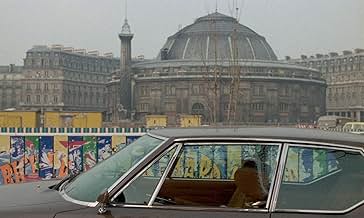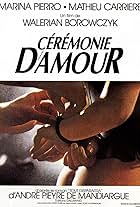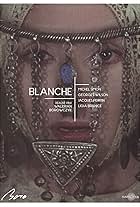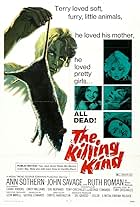CALIFICACIÓN DE IMDb
5.2/10
1.1 k
TU CALIFICACIÓN
Sigismond está casado. En un viaje a París, se obsesiona con una prostituta que se parece a su esposa. Su interferencia con su proxeneta lo lleva a una paliza. Al recibir la noticia de la mu... Leer todoSigismond está casado. En un viaje a París, se obsesiona con una prostituta que se parece a su esposa. Su interferencia con su proxeneta lo lleva a una paliza. Al recibir la noticia de la muerte de su esposa e hijo, está devastado.Sigismond está casado. En un viaje a París, se obsesiona con una prostituta que se parece a su esposa. Su interferencia con su proxeneta lo lleva a una paliza. Al recibir la noticia de la muerte de su esposa e hijo, está devastado.
- Dirección
- Guionistas
- Elenco
Camille Larivière
- Young Prostitute
- (as Camille Lariviere)
Désiré Bastareaud
- Le nain noir
- (sin créditos)
Roger Darton
- Un client de la boîte
- (sin créditos)
- Dirección
- Guionistas
- Todo el elenco y el equipo
- Producción, taquilla y más en IMDbPro
Opiniones destacadas
A sex scene using Pink Floyd's "Shine on you crazy diamond" as soundtrack is one of the very few original things in this movie. But apart from that, little is to be remembered from this mediocre soft porn film.
Joe Dalessandro and Sylvia Krystel were top sex symbols at the time "La marge" was made; the former still had the infamous Warhol trilogy stamped all over him , while the latter had found stardom a couple of years earlier with the legendary "Emanuelle". I guess it was inevitable that the "talents" of these two were combined in one movie, possibly having their strip-in-every-other-scene fame in mind. And while Krystel seems to be laid back in a territory she is familiar with, Dalessandro is obviously nervous at times, the reason probably being that he CANNOT speak french! Almost each time he speaks, the camera avoids shooting his face, making us seriously think if it is his voice that is heard!
Too bad that such an interesting storyline is wasted on consequent, vaguely linked to each other, sex scenes.
3
Joe Dalessandro and Sylvia Krystel were top sex symbols at the time "La marge" was made; the former still had the infamous Warhol trilogy stamped all over him , while the latter had found stardom a couple of years earlier with the legendary "Emanuelle". I guess it was inevitable that the "talents" of these two were combined in one movie, possibly having their strip-in-every-other-scene fame in mind. And while Krystel seems to be laid back in a territory she is familiar with, Dalessandro is obviously nervous at times, the reason probably being that he CANNOT speak french! Almost each time he speaks, the camera avoids shooting his face, making us seriously think if it is his voice that is heard!
Too bad that such an interesting storyline is wasted on consequent, vaguely linked to each other, sex scenes.
3
The once-in-a-lifetime teaming of two '70s pop culture icons, Warhol superstar Joe Dallesandro and Sylvia "Emmanuelle" Kristel, is worth the price of admission alone and the fact it's an awful (albeit awful pretty) movie doesn't hurt, either. It fancies itself a European art house film and even tries to go Bertolucci's LAST TANGO IN Paris one better by laying on the kinkiness with a trowel but the results are more laughable than erotic.
"Little Joe" plays Sigimond Pons, a man who seemingly has it all: a successful career, a gorgeous wife, an adorable son, and a beautiful home with live-in help. He and his wife vow never to betray each other but there's trouble in paradise as soon as his boss sends him to Paris for a week. Once there, Siggie's dark side emerges and he begins leaving his hotel at night to prowl the city's red light district looking for ...something.
He finds it when he locks eyes with Diana (Sylvia Kristel), a prostitute he encounters in a bizarre hotel-cum-brothel. Grabbing his crotch, she leads him upstairs to a toilette and from this point on, the film becomes a kaleidoscope of images meant to convey sexual decadence: lots of red rooms and lipstick, black feathers, panties, and hose (even a black midget) with a little voyeurism and homosexuality thrown in, all in an attempt to make Paris seem like Sodom. Sigimond gets his shirt ripped off and his nipples twisted while getting a hummer before taking Diana from behind and licking her feet in what looks to be a send up of THE NIGHT PORTER and before you know it, he's besotted. Then there's the egg episode; during a bout of lovemaking, Siggie pulls an egg out of a paper bag and torments Diana with it, rolling it all over her body and I was nearly on the edge of my seat wondering where that egg was gonna end up (I needn't have worried, tho -it's softcore, after all). Diana also performs a neat party trick by using her stomach muscles to launch the egg from navel to bush and makes him pay extra for mussing up her hair.
The story gains momentum as Sigimond spirals downward and, throwing caution to the wind, he pursues Diana even after receiving a letter telling him his son has drowned in the family pool and his wife threw herself out the window. Nothing can break the hold this hooker has over his libido, however, and it doesn't take rocket science to figure out the chances of a happy ending are slim to none...
Watching STREETWALKER was a very discombobulating experience; I got to bask in a film that's lovingly lensed while being pummeled by pretentiousness and beaten with blatant symbolism at every turn from Siggie and his wife running for cover as a thunderstorm looms on the horizon to the soundtrack blaring "I'm Not In Love" when Diana has sex. Using dairy products as sex aids was nothing new in the free-wheeling '70s, I know, but did Borowczyk think this film would do for Joe and the egg what butter did for Brando in LAST TANGO?? There's no other explanation.
The entire "affair" would have played much better as a black comedy and it's too bad "Little Joe" didn't make this for director Paul Morrissey and the Warhol gang since it could have been a wicked send-up of Josef von Sternberg's THE BLUE ANGEL. In any event, it's a goldmine of unintentional humor so the end result's the same, I suppose. There's a lot less to this than meets the eye and I didn't drive myself nuts wondering what it all meant -it was hard enough just trying to recall who performed those U.S. pop rock tunes on the soundtrack. If you'd like seeing a pair of somnambulistic sex stars have softcore sex in soft focus and enjoy bad movies with good intentions, I say "Don't miss it" but otherwise, "You've been warned".
Cult director Borowczyk went on to make EMMANUELLE 5 a decade later and although it didn't star Sylvia Kristel (unfortunately), the egg made another cameo appearance and Variety called the film an "unconscious parody". It's nice to know Mr. B hadn't lost the magic touch.
"Little Joe" plays Sigimond Pons, a man who seemingly has it all: a successful career, a gorgeous wife, an adorable son, and a beautiful home with live-in help. He and his wife vow never to betray each other but there's trouble in paradise as soon as his boss sends him to Paris for a week. Once there, Siggie's dark side emerges and he begins leaving his hotel at night to prowl the city's red light district looking for ...something.
He finds it when he locks eyes with Diana (Sylvia Kristel), a prostitute he encounters in a bizarre hotel-cum-brothel. Grabbing his crotch, she leads him upstairs to a toilette and from this point on, the film becomes a kaleidoscope of images meant to convey sexual decadence: lots of red rooms and lipstick, black feathers, panties, and hose (even a black midget) with a little voyeurism and homosexuality thrown in, all in an attempt to make Paris seem like Sodom. Sigimond gets his shirt ripped off and his nipples twisted while getting a hummer before taking Diana from behind and licking her feet in what looks to be a send up of THE NIGHT PORTER and before you know it, he's besotted. Then there's the egg episode; during a bout of lovemaking, Siggie pulls an egg out of a paper bag and torments Diana with it, rolling it all over her body and I was nearly on the edge of my seat wondering where that egg was gonna end up (I needn't have worried, tho -it's softcore, after all). Diana also performs a neat party trick by using her stomach muscles to launch the egg from navel to bush and makes him pay extra for mussing up her hair.
The story gains momentum as Sigimond spirals downward and, throwing caution to the wind, he pursues Diana even after receiving a letter telling him his son has drowned in the family pool and his wife threw herself out the window. Nothing can break the hold this hooker has over his libido, however, and it doesn't take rocket science to figure out the chances of a happy ending are slim to none...
Watching STREETWALKER was a very discombobulating experience; I got to bask in a film that's lovingly lensed while being pummeled by pretentiousness and beaten with blatant symbolism at every turn from Siggie and his wife running for cover as a thunderstorm looms on the horizon to the soundtrack blaring "I'm Not In Love" when Diana has sex. Using dairy products as sex aids was nothing new in the free-wheeling '70s, I know, but did Borowczyk think this film would do for Joe and the egg what butter did for Brando in LAST TANGO?? There's no other explanation.
The entire "affair" would have played much better as a black comedy and it's too bad "Little Joe" didn't make this for director Paul Morrissey and the Warhol gang since it could have been a wicked send-up of Josef von Sternberg's THE BLUE ANGEL. In any event, it's a goldmine of unintentional humor so the end result's the same, I suppose. There's a lot less to this than meets the eye and I didn't drive myself nuts wondering what it all meant -it was hard enough just trying to recall who performed those U.S. pop rock tunes on the soundtrack. If you'd like seeing a pair of somnambulistic sex stars have softcore sex in soft focus and enjoy bad movies with good intentions, I say "Don't miss it" but otherwise, "You've been warned".
Cult director Borowczyk went on to make EMMANUELLE 5 a decade later and although it didn't star Sylvia Kristel (unfortunately), the egg made another cameo appearance and Variety called the film an "unconscious parody". It's nice to know Mr. B hadn't lost the magic touch.
Borowczyk remains one of the least appreciated filmmakers of his era, inarguably an auteur, but one so erratic and unusual that he remains cherished only by a handful of critics for his early surrealist work and by cult movie devotees for his later, sexually-explicit films. While from the mid-seventies onward his films would range from the good (Behind Convent Walls, The Story of Sin) to the not-so-good (The Art of Love, Immoral Tales, etc), his film-making legacy rests with the bizarre La Bete, which unfortunately belongs to the latter category. However it is his early films (both animated and live action) that are undoubtedly Borowczyk's key works Blanche, for instance, is one of the finest films ever made, while Goto the Island of Love is almost as good and in many ways these films set up the themes that would be prevalent throughout much of his subsequent work, most importantly that sex is constantly linked with guilt, persecution and death.
This is perhaps why La Marge is so unjustly obscure. The casting of Kristel (not to mention the film's alternate title Emmanuelle '77) suggests the film was tailored to appeal to the softcore market, yet the emphatically gloomy atmosphere and subject matter, which includes death, adultery and suicide, is significantly at odds with this. Compared to the other Borowczyk films of this period, with perhaps the exception of The Story of Sin, La Marge is surprisingly restrained. The film works because of its minimalism and ambiguity the dialogue is sparse, presumably because of the actors' inability to speak French, and their character motivation is vague to say the least. It is never made clear why Sigimond is driven to cheat on his seemingly perfect wife, though it is perhaps no coincidence that Diana more than slightly resembles her. Borowczyk as usual fills the movie with visual motifs, using reflective surfaces to signify the duality of Sigimond's life, and lingering, unerotic shots of female genitalia to convey what is at the core of his actions and desires, and what is, in essence, being a Borowczyk film, Sigimond's prison.
The film is beautifully photographed, full of the director's obtuse trademark framing, and, something rather unusual for Borowczyk, features a remarkable period soundtrack, from the first Kristel/Dallesandro sex scene played out to 10CC's I'm Not in Love to the stunning blowjob sequence set to Pink Floyd, and an incredible climax that employs Elton John's Funeral For a Friend. While La Marge is distinctively a Borowczyk film in many respects, it also possesses a sombreness and maturity that was rare for the director, for despite the occasional surreal moment (a dwarf watching television, a hotel maid examining her breasts in the mirror, a deranged old woman watching sex through a keyhole), it is primarily a straightforward examination of two doomed characters unable to escape the prisons of their existence. Fans of the director's early work may find the film overly conventional, while devotees of his later period may be disappointed by how restrained it is, yet La Marge is an unfairly neglected film, one of the director's most enduring and haunting works.
This is perhaps why La Marge is so unjustly obscure. The casting of Kristel (not to mention the film's alternate title Emmanuelle '77) suggests the film was tailored to appeal to the softcore market, yet the emphatically gloomy atmosphere and subject matter, which includes death, adultery and suicide, is significantly at odds with this. Compared to the other Borowczyk films of this period, with perhaps the exception of The Story of Sin, La Marge is surprisingly restrained. The film works because of its minimalism and ambiguity the dialogue is sparse, presumably because of the actors' inability to speak French, and their character motivation is vague to say the least. It is never made clear why Sigimond is driven to cheat on his seemingly perfect wife, though it is perhaps no coincidence that Diana more than slightly resembles her. Borowczyk as usual fills the movie with visual motifs, using reflective surfaces to signify the duality of Sigimond's life, and lingering, unerotic shots of female genitalia to convey what is at the core of his actions and desires, and what is, in essence, being a Borowczyk film, Sigimond's prison.
The film is beautifully photographed, full of the director's obtuse trademark framing, and, something rather unusual for Borowczyk, features a remarkable period soundtrack, from the first Kristel/Dallesandro sex scene played out to 10CC's I'm Not in Love to the stunning blowjob sequence set to Pink Floyd, and an incredible climax that employs Elton John's Funeral For a Friend. While La Marge is distinctively a Borowczyk film in many respects, it also possesses a sombreness and maturity that was rare for the director, for despite the occasional surreal moment (a dwarf watching television, a hotel maid examining her breasts in the mirror, a deranged old woman watching sex through a keyhole), it is primarily a straightforward examination of two doomed characters unable to escape the prisons of their existence. Fans of the director's early work may find the film overly conventional, while devotees of his later period may be disappointed by how restrained it is, yet La Marge is an unfairly neglected film, one of the director's most enduring and haunting works.
LA MARGE by Borowski is a dreamy and trippy film – it is anchored in the reality, but it shows a hidden, subconscious reality. Poetic, dramatic and cool, it features also a good, evocative soundtrack of the 70s.
Sigimond (Joe Dallesandro) is married to Sergine. Sergine is pretty and she lives with Sigimond a fulfilled life, sexually and otherwise. One day Sigimond (Joe Dallesandro) goes to Paris, and by night, in a brothel, he knows a prostitute, Diana (Sylvia Kristel). She will personify the mystery of pleasure – beautiful, delicate and elusive. Diana (Sylvia Krystel) will be his obsession.
LA MARGE has mobile and sensitive cameras, a good portrayal of the milieu (environment and characters) and a wonderful soundtrack (for example, the almost forgotten 10cc among others)
LA MARGE is a very personal film – if you like cinema as an audiovisual art, you should try this film, but those that want a film with a very straightforward story should look elsewhere.
Sigimond (Joe Dallesandro) is married to Sergine. Sergine is pretty and she lives with Sigimond a fulfilled life, sexually and otherwise. One day Sigimond (Joe Dallesandro) goes to Paris, and by night, in a brothel, he knows a prostitute, Diana (Sylvia Kristel). She will personify the mystery of pleasure – beautiful, delicate and elusive. Diana (Sylvia Krystel) will be his obsession.
LA MARGE has mobile and sensitive cameras, a good portrayal of the milieu (environment and characters) and a wonderful soundtrack (for example, the almost forgotten 10cc among others)
LA MARGE is a very personal film – if you like cinema as an audiovisual art, you should try this film, but those that want a film with a very straightforward story should look elsewhere.
10SMK-4
La Marge is the kind of film conventional film critics hate to review, because it does not quite fit into these little genre boxes they have in their heads.
In its cinematography and story-telling La Marge is very much like an Art House picture: we have emotions, tragedy, laughter, silence, pictures telling a story, plot twists, slow pace, all the ingredients you might expect in the most toffee-nosed productions only people with a university degree are supposed to enjoy. And yet, it is also a piece of erotica, shamelessly exploitative and very effective in its abundant use of (mostly) female nudity and its sex scenes.
Erotic cinema does not get any classier than this.
In its cinematography and story-telling La Marge is very much like an Art House picture: we have emotions, tragedy, laughter, silence, pictures telling a story, plot twists, slow pace, all the ingredients you might expect in the most toffee-nosed productions only people with a university degree are supposed to enjoy. And yet, it is also a piece of erotica, shamelessly exploitative and very effective in its abundant use of (mostly) female nudity and its sex scenes.
Erotic cinema does not get any classier than this.
¿Sabías que…?
- TriviaIn her autobiography, "Nue", Sylvia Kristel said that this was probably her favorite acting role, and that she found it a shame that not a lot of people saw it at the cinema.
- Versiones alternativasThe Director's Cut released in Germany on Blu-ray runs almost six minutes longer than the French theatrical version. Both versions contain scenes missing in the other version, as well as alternative versions of Sigimond washing himself in the bathroom and of the scene where Sigimond and Diana play with the egg. The Director's Cut also shows additional scenes in which Sigimond's chambermaid is fascinated by him and unsuccessfully tries to seduce him. The additional scenes of the Director's Cut nicely round off the film. Some of the additional scenes of the Director's Cut come from the German theatrical version and are slightly lower in quality. Presumably, they had access to a 35mm scan here. At one point, they even seem to have resorted to a VHS. In the scenes towards the end when Sigimond is driving in the car, only the French audio is heard, as these scenes were never present in the German version of the film. Optional German subtitles are provided for these scenes. Runtimes: French theatrical version: 86:11 min. Director's Cut: 91:53 min.
- ConexionesFeatures Pépé le Moko (1937)
Selecciones populares
Inicia sesión para calificar y agrega a la lista de videos para obtener recomendaciones personalizadas
- How long is The Margin?Con tecnología de Alexa
Detalles
Contribuir a esta página
Sugiere una edición o agrega el contenido que falta

Principales brechas de datos
What is the Italian language plot outline for Una mujer de la vida (1976)?
Responda























